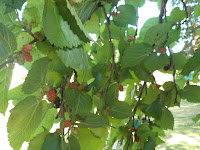 |
| Photo by Ann Godden |
W T Dibb was born in Hull In December 1822. His father was Emanuel Dibb, a brewer who, in the 1826 Directory, had premises in Mill St, Hull. In 1828 Emanuel inherited property from his father-in-law and evidently became a prosperous man. However, he died in 1839 when his son William was only 17. Four years later William's mother Margaret also died, leaving the young man with a thriving business to run.
William married Mary Ann Riplin in August 1844, but she died three years later. He swiftly remarried, this time to Caroline Sarah Knocker, the daughter of William Knocker, a distinguished naval Lieutenant. In 1846 Dibb had gone into partnership with another brewer, Robert Ward Gleadow, to form Gleadow, Dibb and Co, and the company built a new brewery on Silvester St. (In 1887, after William's death, the company became Hull Brewery.) By 1851 William and Caroline were living in Spring St, Hull, and the census records that William was a brewer employing 10 men. The business grew. By the time of the 1881 census he was employing 40 men and living at 6, Claremont Terrace, Beverley Rd (now part of Beverley Rd itself).
 |
| Claremont Terrace, picture supplied by Bill Longbone |
However, by October 1882 the new buildings were no further forward; the Charity Commissioners had only just got round to sending out the correct forms. The scheme that was submitted involved building 11 new rooms in the Master's garden; turning the widows' house into a sickroom and mortuary; setting new pay levels for staff; and increasing the allowance for attending to sick inmates. There would be 44 brethren, 44 sisters and 6 widows in the House in total. Three years went by with no word from the Charity Commission.
It was 1885 before the new rooms were approved, sited differently from the original plans (i.e. not in the Master's garden), and building begun. William Dibb, meanwhile, had spent a year as Sheriff of Hull in 1883. As the new rooms took shape he asked that they "should be built in as substantial and convenient a form as possible and every consideration and regard for the comfort of the inmates". The cost was never disclosed.
In August 1886 Dibb said that he was willing to pay for another block of rooms. But that was not to be. He died on 28 December 1886 while on a train journey from Bridlington to Hull. It was thought that he suffered a heart attack, having had to rush to catch the train. He was buried in the Hull General Cemetery. The photo comes from a memorial book written about him in 1888. Sadly, this is one of the gravestones removed and trashed by the Hull City Council in the 1970s.
William's son, the splendidly named Oscar Knocker Dibb, was also a generous donor to the Charterhouse. Born in 1866, he became a lawyer, practising in Hull before moving to Surrey. He died in 1916 leaving £1,000 in his will to the hospital (worth nearly £60,000 in today's values).






























